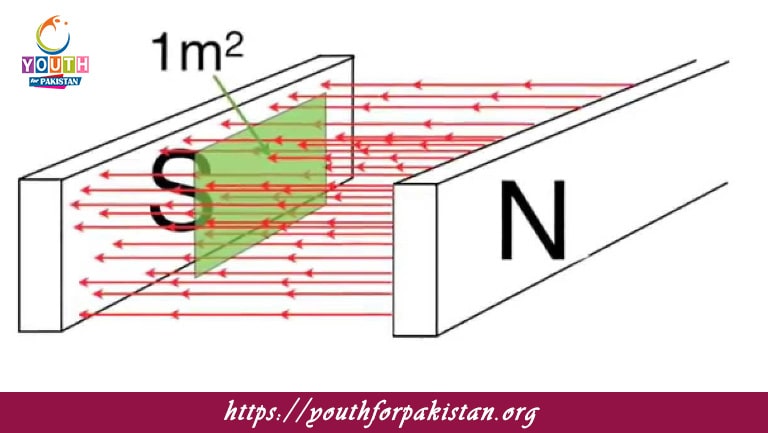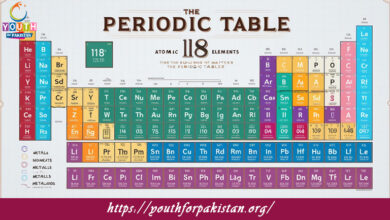Magnetic Flux Density MDCAT MCQs with Answers

Welcome to the Magnetic Flux Density MDCAT MCQs with Answers. In this post, we have shared Magnetic Flux Density Multiple Choice Questions and Answers for PMC MDCAT 2024. Each question in MDCAT Physics offers a chance to enhance your knowledge regarding Magnetic Flux Density MCQs in this MDCAT Online Test.
Magnetic Flux Density MDCAT MCQs Test Preparations
Magnetic flux density is also known as:
a) Magnetic field strength
b) Magnetic induction
c) Magnetic potential
d) Magnetic permeability
The unit of magnetic flux density in the International System of Units (SI) is:
a) Tesla
b) Weber
c) Ampere
d) Henry
Magnetic flux density (B) is defined as:
a) The rate of change of magnetic flux
b) The magnetic flux per unit area
c) The force experienced by a charged particle
d) The product of electric field and area
If the magnetic flux through a surface is 2 Weber and the area is 0.5 m², the magnetic flux density is:
a) 4 Tesla
b) 1 Tesla
c) 0.25 Tesla
d) 2 Tesla
The magnetic flux density vector is always:
a) Parallel to the magnetic field lines
b) Perpendicular to the magnetic field lines
c) In the direction of current flow
d) Randomly oriented
The magnetic flux density at a point is given by:
a) B = Φ / A
b) B = A / Φ
c) B = Φ × A
d) B = A × Φ
Magnetic flux density is a vector quantity that has both:
a) Magnitude and direction
b) Only magnitude
c) Only direction
d) No magnitude or direction
The flux density in a region is increased by:
a) Decreasing the magnetic field
b) Increasing the surface area
c) Increasing the magnetic flux
d) Decreasing the angle between the magnetic field and the surface
In which unit is magnetic flux density measured?
a) Volt
b) Ohm
c) Tesla
d) Newton
The magnetic flux density of the Earth’s magnetic field is approximately:
a) 10^-4 Tesla
b) 10^-3 Tesla
c) 1 Tesla
d) 10^2 Tesla
If a magnetic field has a flux density of 3 Tesla and an area of 2 m², the total flux is:
a) 1.5 Weber
b) 6 Weber
c) 5 Weber
d) 3 Weber
Magnetic flux density is directly proportional to:
a) The magnetic field strength
b) The surface area
c) The angle between the field and the surface
d) The rate of change of magnetic flux
The magnetic flux density in a region can be described by:
a) The number of magnetic field lines per unit area
b) The number of electric field lines per unit area
c) The total electric charge in the region
d) The total magnetic charge in the region
The flux density (B) in a magnetic field is measured in:
a) Newton per Coulomb
b) Ampere per meter
c) Weber per square meter
d) Volt per meter
A magnetic flux density of 5 Tesla through an area of 1 m² corresponds to a flux of:
a) 5 Weber
b) 1 Weber
c) 10 Weber
d) 0.5 Weber
In a uniform magnetic field, the flux density is:
a) Constant throughout the field
b) Varies with the distance from the source
c) Zero at the center of the field
d) Maximum at the edges of the field
Magnetic flux density is related to the force on a moving charge by:
a) F = qvB
b) F = qB / v
c) F = v / qB
d) F = B / qv
If the area through which the magnetic flux is measured is increased while keeping the flux density constant, the total flux will:
a) Increase
b) Decrease
c) Remain the same
d) Depend on the shape of the area
A magnetic flux density of 2 Tesla is applied to a surface area of 0.1 m². The flux through this surface is:
a) 0.2 Weber
b) 2 Weber
c) 0.5 Weber
d) 0.1 Weber
The direction of the magnetic flux density vector is given by:
a) The direction of the magnetic field lines
b) The direction of current flow
c) The direction of electric field lines
d) The direction of force on a moving charge
Magnetic flux density is represented by the symbol:
a) Φ
b) B
c) E
d) H
If the magnetic flux density is 0.5 Tesla and the area is 4 m², the magnetic flux is:
a) 2 Weber
b) 0.2 Weber
c) 1 Weber
d) 0.5 Weber
A magnetic flux density of 0.8 Tesla is applied perpendicularly to a surface of area 3 m². The flux through the surface is:
a) 2.4 Weber
b) 0.24 Weber
c) 1.2 Weber
d) 0.8 Weber
The magnetic flux density of the Earth’s magnetic field is approximately:
a) 1 Tesla
b) 0.5 Tesla
c) 0.01 Tesla
d) 0.1 Tesla
Magnetic flux density can be increased by:
a) Increasing the magnetic field strength
b) Increasing the distance from the source
c) Increasing the surface area
d) Decreasing the flux
The flux density of a magnetic field is affected by:
a) The material through which the field passes
b) The shape of the surface
c) The orientation of the surface
d) All of the above
The SI unit of magnetic flux density is:
a) Newton per Coulomb
b) Weber per meter
c) Tesla
d) Volt per meter
In a non-uniform magnetic field, the flux density:
a) Varies with position
b) Is constant throughout the field
c) Is zero at the center
d) Is maximum at the edges
If the magnetic flux through a surface is known, the flux density can be calculated by:
a) B = Φ / A
b) B = A / Φ
c) B = Φ × A
d) B = A × Φ
To find the magnetic flux density at a point, you need to know:
a) The total magnetic flux and the area at that point
b) Only the area of the surface
c) Only the magnetic field strength
d) The charge of the particles in the field
In a magnetic field with a flux density of 0.6 Tesla, if the area is halved, the flux through the surface:
a) Doubles
b) Halves
c) Remains the same
d) Is zero
Magnetic flux density is responsible for:
a) Generating electric fields
b) Creating magnetic fields
c) Inducing currents in conductors
d) Both b and c
The magnetic flux density at the center of a solenoid is:
a) Maximum
b) Zero
c) Minimum
d) Constant but less than at the ends
If the magnetic flux density is 2 Tesla and the angle between the field and the normal is 30 degrees, the effective flux density is:
a) 2 × cos(30°)
b) 2 × sin(30°)
c) 2 × cos(60°)
d) 2 × sin(60°)
The magnetic flux density inside a solenoid is proportional to:
a) The number of turns per unit length
b) The resistance of the solenoid
c) The length of the solenoid
d) The temperature of the solenoid
The magnetic flux density (B) is calculated as:
a) B = μ₀H
b) B = Φ × A
c) B = H / μ₀
d) B = Φ / μ₀
If the magnetic flux density increases, the magnetic flux through a given area will:
a) Increase
b) Decrease
c) Remain the same
d) Depend on the temperature
Magnetic flux density is useful for calculating:
a) The force on a current-carrying wire
b) The electric potential in a circuit
c) The resistance of a material
d) The capacitance of a capacitor
The magnetic flux density at a point in a magnetic field is:
a) Dependent on the distance from the source
b) Independent of the distance from the source
c) Only affected by the area of the surface
d) Inversely proportional to the surface area
The magnetic flux density (B) in a region is increased by:
a) Increasing the number of magnetic field lines per unit area
b) Decreasing the magnetic field lines per unit area
c) Reducing the surface area
d) Reducing the number of field lines
If you are interested to enhance your knowledge regarding Physics, Chemistry, Computer, and Biology please click on the link of each category, you will be redirected to dedicated website for each category.





